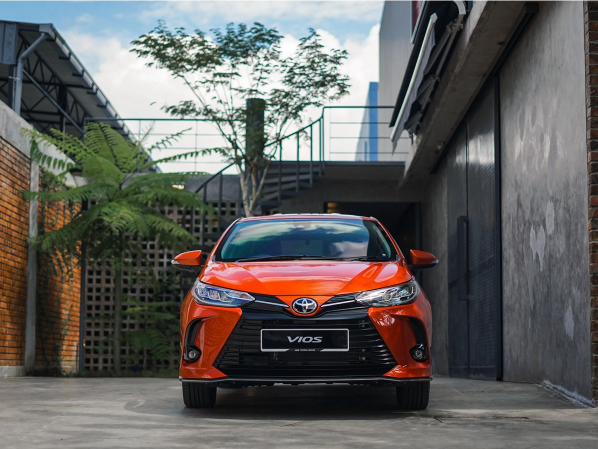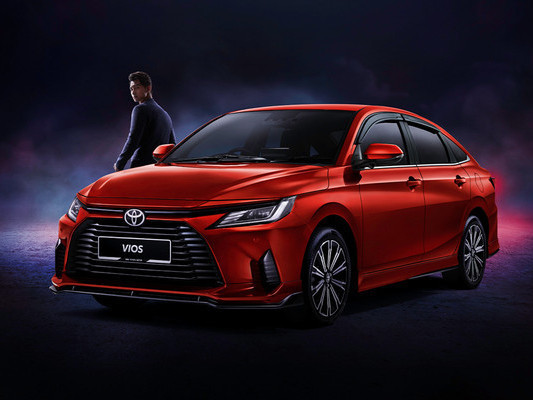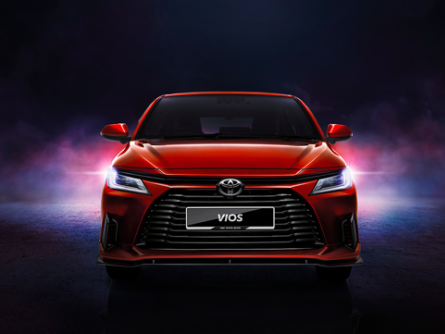Q
how to change tires toyota vios
Changing a tire on your Toyota Vios is actually pretty straightforward. First off, make sure the car's parked on a flat, safe spot and yank the handbrake tight. Then, jack the car up—remember, stick the jack right on those designated lift points under the car to avoid bashing up the body. Next, grab your wrench and loosen the wheel nuts, but don't take 'em all the way off yet. Once the tire's off the ground, then you can fully remove the nuts and pop the old tire off.
Slap the new tire on, and start by hand-tightening the nuts as much as you can. After that, use the wrench to fully tighten 'em up, going in a crisscross (diagonal) pattern—super important for even pressure. Finally, slowly lower the jack and give all the nuts one last check to make sure they're good and snug.
For our Malaysian friends, with the tropical climate and all that rain, you'll want to keep an eye on your tire tread depth. Aim for at least 1.6mm to make sure you've got decent wet grip. And don't forget to check tire pressure regularly too—you'll usually find the manufacturer's recommended PSI on a sticker inside the door jamb or fuel filler flap. Driving around with underinflated tires for too long can make 'em overheat, and that's a one-way ticket to a blowout.
Now, the Vios is an economical little runabout, so the stock tires are usually set up for a comfy, quiet ride. But if you're hitting the highway a lot or tackling more twisty mountain roads, you might want to think about upgrading to a higher-performance set. Just make sure the size matches the original spec exactly! And after swapping tires, it's a good idea to get a wheel alignment done to keep the car tracking straight and stable.
Special Disclaimer: This content is published by users and does not represent the views or position of PCauto.
Related Q&A
Q
What is the maintenance schedule for a 2021 Vios?
For the 2021 Toyota Vios, it's recommended to get regular maintenance every 6 months or 10,000 kilometers, whichever comes first. This typically includes an engine oil change, oil filter replacement, brake system check, tire pressure inspection, and chassis bolt tightening. At 20,000 kilometers, you'll need to additionally inspect or replace the air filter and cabin air filter. Then, around 40,000 kilometers, it's a good idea to swap out the brake fluid and spark plugs to keep the engine running at its best.
Malaysia's hot and humid climate can speed up fluid degradation, so owners might want to shorten the intervals for coolant and transmission fluid changes to roughly 60,000 kilometers. It's worth noting that if you often drive in heavy traffic or take frequent short trips—what we call "severe driving conditions"—this can increase wear and tear on components. In those cases, consider changing the engine oil every 5,000-7,000 kilometers instead.
Sticking with Toyota Genuine oil as recommended by the factory, like 5W-30 viscosity, will help the engine handle the local heat better and also keep your original warranty intact. Regular maintenance isn't just about keeping performance up; it also lets mechanics use computer diagnostics to spot potential issues early. For example, checking the battery life is super important here in Malaysia to prevent starting problems during the rainy season.
Q
What is the engine of the Toyota Vios 2021?
The 2021 Toyota Vios in the Malaysian market comes with a 1.5-liter 2NR-FBE four-cylinder naturally aspirated petrol engine, featuring Dual VVT-i technology. It cranks out 107 horsepower (79 kW) and 140 Nm of torque, paired with a CVT gearbox that simulates 7 speeds. This powertrain focuses on fuel efficiency and smooth driving, with an official combined fuel consumption of around 5.1 liters/100 km. What's worth noting is the aluminum cylinder block that cuts weight, and the optimized intake and exhaust system which boosts low-end torque – perfect for Malaysia's stop-and-go city traffic. In its class, the Vios isn't about high performance, but it's known for durability and low maintenance costs, staying true to Toyota's practical reputation. If you need more power, some rivals offer turbo options, but the naturally aspirated engine still holds the edge in long-term running costs and easy repairs – that's part of why the Vios remains a hit in Malaysia's family car scene.
Q
Is Toyota Vios made in China?
The Toyota Vios in the Malaysian market mainly comes from production in Thailand, not China. As Toyota's key production base in Southeast Asia, Thailand manufactures the Vios specifically designed for the ASEAN region, making it better suited to local climate and road conditions while maintaining Toyota's usual reliability. As a global strategic model for Toyota, the Vios has different production layouts in various regions. For example, models sold in the Chinese market may be produced by local joint ventures, but the Vios supply in Malaysia is primarily imported from Thailand. This explains why Vios vehicles in Malaysia often have "Made in Thailand" on their nameplates. For Malaysian consumers, choosing a Thai-produced Vios actually has certain advantages: the Thai factory has mature craftsmanship, the parts supply chain is similar to Malaysia's, leading to relatively lower maintenance costs later on. Additionally, vehicles produced in Thailand enjoy tariff benefits under ASEAN trade agreements, which indirectly enhances the Vios' value for money in the Malaysian market. If there are doubts about the vehicle's origin, it is recommended to further confirm through the first letter of the Vehicle Identification Number (VIN) or the vehicle nameplate; typically, Thai-made Vios have a VIN starting with "M".
Q
What are common Vios problems?
The Toyota Vios is a top-selling entry-level sedan in the Malaysian market, boasting solid overall reliability. However, there are a few common issues owners should keep an eye on. For instance, some early models might experience unstable engine idling or slight vibrations, usually linked to throttle body carbon buildup or aging spark plugs—regular cleaning and maintenance are recommended. Additionally, suspension bushings on certain model years can develop squeaks after prolonged use, especially given Malaysia's rough road conditions; replacing the rubber components promptly should fix this. The CVT transmission may occasionally have minor jerking in extreme traffic jams, but regular oil changes can effectively extend its lifespan. The electric power steering system might trigger a protection mode after long hours of operation in high temperatures, causing heavier steering feel—simply turning off the engine and restarting should restore normal function. Notably, the Vios has a rather unique air filter placement, making DIY replacements a bit tricky; it’s advisable to follow the manual for that. These are all normal wear-and-tear issues. As long as you stick to the manufacturer’s recommended 10,000 km service intervals, the Vios remains quite durable under Malaysia’s hot climate and varied road conditions. For Malaysian consumers on a budget who value hassle-free practicality, it’s still a worthy option to consider.
Q
How reliable is the 2021 Toyota Vios?
The 2021 Toyota Vios has delivered impressive reliability in the Malaysian market. True to Toyota's reputation for durability, it's powered by a proven 1.5L Dual VVT-i engine paired with a CVT transmission, offering smooth power delivery and excellent fuel efficiency—perfect for local city driving. Maintenance costs are relatively low, parts are readily available, and repairs are hassle-free. Toyota's extensive after-sales service network in Malaysia further enhances the ownership experience. Based on owner feedback, common concerns mainly center on details like sound insulation and interior materials, but mechanical failure rate is extremely low. As an economy sedan, its overall performance meets or even exceeds expectations. It's worth noting that the Vios achieved a 5-star rating in ASEAN NCAP crash tests, ensuring safety. For Malaysian consumers with limited budgets who value reliability, it's a practical choice, and its resale value leads the segment, giving it an edge in long-term ownership costs.
Q
Is the Toyota Vios a SUV?
The Toyota Vios isn't an SUV—it's a compact four-door sedan (B-segment sedan), designed mainly for city commuting and daily family use. It's super popular in Malaysia thanks to its fuel efficiency, reliability, and great value for money. The Vios sits lower to the ground, with a obviously different ride height compared to SUVs (which usually have more ground clearance for rough roads), and it doesn't come with SUV staples like four-wheel drive. Instead, it's all about nimble handling and comfort. If you're after a Toyota SUV in a similar price range, check out the Raize or Rush. Both have taller ride heights and boxier body styles, making them better for different types of terrain. When Malaysian buyers are picking a car, it's important to know the difference between categories. Sedans are good for highway driving and better on fuel, while SUVs offer more ground clearance and flexible space. It really comes down to your actual needs—like the roads you'll be driving on or how many family members you have. And hey, all Toyota models in Malaysia come with a solid after-sales service network, so that's a plus.
Q
Is the 2021 Venza expensive to maintain?
The 2021 Toyota Venza's maintenance costs in Malaysia are on the upper end of the medium range. Since it comes with a hybrid system, daily upkeep expenses might be slightly higher than traditional gasoline-powered vehicles, but over the long haul, you can save some money through its lower fuel consumption. Regular maintenance like oil changes and filter replacements costs are similar to other SUVs in its class, roughly between RM400 and RM600, depending on the service center's pricing. The hybrid battery is pretty durable and generally doesn't need frequent replacement, but if it does need changing after the warranty expires, the cost could be steep. It's advisable for owners to stick to the official maintenance schedule to extend the vehicle's lifespan and keep costs in check. Malaysia's climate has minimal impact on battery performance, but regular checks of the cooling system and electrical components are still important. Toyota has an extensive after-sales service network in Malaysia with ample supply of genuine parts, which helps reduce repair waiting times and potential costs. For consumers considering a used Venza, it's recommended to check the maintenance records to ensure the previous owner kept up with proper servicing. Hybrid vehicle maintenance requires specialized technicians, so choosing an authorized service center is a smart move.
Q
What is the difference between 2021 and 2023 Toyota Vios?
The main differences between the 2021 and 2023 Toyota Vios lie in upgrades to exterior design, tech features, and safety performance. The 2023 Vios gets a more modern front-end design, including a redesigned grille and LED headlight assembly, giving it a sportier overall look. Inside, the 2023 model ups the ante with a larger infotainment screen and supports more advanced smartphone connectivity, like wireless Apple CarPlay and Android Auto, making it more user-friendly. When it comes to safety, the 2023 Vios comes standard with Toyota Safety Sense active safety suite, packing features like pre-collision warning, lane departure alert, and automatic high beam adjustment, offering more comprehensive protection compared to the 2021 version. Both models share the same powertrain – the trusty 1.5-liter Dual VVT-i engine paired with a CVT transmission – but the 2023 Vios gets some minor tweaks to boost fuel efficiency. For Malaysian consumers, the 2023 Vios upgrades are all about added value, especially with competition heating up in the segment, these improvements help it stay competitive. It's worth noting that Vios models in Malaysia usually get some market-specific tweaks to meet local needs, like beefed-up air conditioning systems to handle the tropical climate – details that carry over to both model years.
Q
How much is Toyota Vios in Indonesia?
In the Indonesian market, the price of the Toyota Vios varies depending on the trim and configuration. The base manual transmission version starts at around 270 million Indonesian rupiah (approximately RM82,000), while the top-spec automatic model can go up to 350 million Indonesian rupiah (about RM106,000). Actual prices may be affected by local taxes, promotional policies, and other factors. The Indonesian-spec Vios has slight configuration differences compared to the Malaysian version. For instance, the Indonesian market places more emphasis on practical features like rear-seat air-conditioning vents, whereas the Malaysian variant might highlight a more tech-forward feel. For Malaysian consumers considering cross-border purchases, it’s important to note the differences in vehicle specifications between the two countries, including emission standards, warranty terms, and right-hand drive vs. left-hand drive compatibility—all of which could impact the user experience and long-term maintenance costs. Additionally, the Vios is generally known for its durability and fuel efficiency across Southeast Asian markets, making it suitable for city commuting, though tuning tweaks in different countries may result in subtle variations in driving feel.
Q
What generation is Vios in 2021?
The Toyota Vios sold in the Malaysian market in 2021 belongs to the third-generation model (codenamed XP150). This generation has undergone several minor facelifts since its launch in 2013. The 2021 model continues with this generation's architecture but comes with an upgraded 1.5L Dual VVT-i engine paired with a CVT transmission, delivering excellent fuel efficiency. The third-gen Vios is widely popular in Malaysia for its durability and low maintenance costs. It measures 4,425mm in length, 1,730mm in width, and 1,475mm in height, with a 2,550mm wheelbase, offering relatively spacious rear-seat room in its class. It's worth noting that some Southeast Asian countries welcomed the all-new fourth-generation Vios based on the DNGA platform in 2023, but the Malaysian market followed suit a bit later due to strategic adjustments. The current third-gen Vios is locally assembled (CKD) with a cooling system optimized for tropical climates. It comes standard with 7 airbags (on higher-spec variants) and Toyota Safety Sense active safety technology. Its used car value retention rate has long been at the forefront of B-segment sedans in Malaysia, making it still a practical choice for budget-conscious buyers.
Popular Cars
Model Year
Car Compare
Car Photo
Latest Q&A
Q
What are the most common issues with a 2017 Chevy Colorado?
Here are some common issues reported with the 2017 Chevy Colorado:
The transmission can feel a bit jerky, especially during low-speed shifts—this seems tied to the tuning of the 6-speed auto in certain models. Regular maintenance and software updates usually help. Some owners also notice brake noise, often caused by pad material or dust buildup; swapping to premium pads or a good clean typically sorts it out.
On the tech side, the infotainment screen might freeze or go black occasionally, but a reboot or software refresh generally fixes it. Keep an eye on rubber hoses in the engine bay too—they can age faster in hot, humid climates, so inspect them regularly to prevent leaks.
Diesel owners should watch the DPF (particulate filter)—short trips can clog it up over time. And since it’s a midsize truck, rust protection matters, especially near the coast. A yearly undercoat spray wouldn’t hurt.
Lastly, if you feel slight play in the steering, it’s likely worn tie-rod bushings. Catch it early to avoid bigger repairs. Most of these quirks depend on driving conditions and upkeep, so stick to the service schedule to keep the Colorado running strong.
Q
How reliable is a 2017 Colorado?
The 2017 Chevy Colorado delivers above-average reliability, with its proven 3.6L V6 gas engine and 6-speed automatic transmission combo showing good long-term durability. While major mechanical issues are rare, some owners report occasional infotainment glitches. The 2.8L Duramax turbo-diesel packs serious torque, but Malaysia's humid climate demands extra attention to DPF maintenance.
Built on a high-strength steel frame with leaf-spring rear suspension, this truck handles 700kg payloads effortlessly—perfect for hauling gear, though the ride's stiffer than competitors with multi-link setups. On the used market, well-maintained examples under 100,000km still hold up nicely; just pay special attention to transfer case fluid and 4WD engagement (crucial in Southeast Asia's rainy conditions).
Repair costs run 15-20% lower than Japanese rivals, but genuine parts can take longer to source—smart owners stock up on air filters beforehand. Bottom line? Stay on top of transmission and transfer case fluid changes, and this American workhorse won't let you down.
Q
How often should you change the oil in a 2017 Colorado?
For the oil change frequency of the 2017 Colorado model, it is recommended to follow a maintenance cycle of every 8000 to 10000 kilometers or every 6 months, whichever comes first. If the vehicle is frequently used in harsh conditions such as high temperature, high dust, or frequent short distance driving, it can be shortened to 5000 kilometers or 6 months for replacement. The 2.5L or 3.6L engine equipped in this car has high requirements for oil cleanliness and viscosity. It is recommended to use fully synthetic oil that meets the Dexos1 standard, such as 5W-30 viscosity products, to better protect the engine and improve fuel economy. It should be noted that long-term use of inferior engine oil or overdue replacement may lead to sludge accumulation, increased component wear, and even affect the lifespan of the turbocharger. During maintenance, the oil level and condition can be checked synchronously. If the oil appears visibly black or contains metal shavings, it should be repaired in a timely manner. In addition, different driving habits can also affect the lifespan of the engine oil. For example, frequent rapid acceleration or high load towing can accelerate the deterioration of engine oil performance. It is recommended that car owners adjust maintenance intervals flexibly according to their actual usage situation, while keeping complete maintenance records to maintain the value of the used car.
Q
What is the fuel economy of a 2017 Colorado?
The fuel economy of the 2017 Chevrolet Colorado varies depending on the driving method and engine configuration. When the rear wheel drive version is equipped with a 2.5-liter four cylinder engine, the city fuel consumption is about 11.2 liters/100 kilometers and the highway fuel consumption is about 8.7 liters/100 kilometers, while the four-wheel drive version of the 3.6-liter V6 engine has a city fuel consumption of about 13.1 liters/100 kilometers and a highway fuel consumption of about 9.8 liters/100 kilometers. The diesel version with a 2.8-liter turbocharged engine performs better, with a city fuel consumption of about 10.2 liters/100 kilometers and a highway fuel consumption of about 7.6 liters/100 kilometers. The fuel consumption of this type of mid size pickup truck is usually higher than that of a sedan, but Colorado performs evenly among similar models with its engine technology and lightweight design. If fuel efficiency is emphasized, the diesel version can be prioritized, and its low-speed and high torque characteristics are also suitable for load requirements. Actual fuel consumption is also affected by driving habits, road conditions, and maintenance status. Regular maintenance of tire pressure and engine condition can help optimize fuel performance.
Q
What transmission is in a 2017 Chevy Colorado?
The 2017 Chevrolet Colorado offered two transmission options depending on trim. The 2.5L four-cylinder and 3.6L V6 gasoline engines came paired with a sturdy 6-speed automatic (6L80), while the 2.8L turbo-diesel got a torque-focused 6-speed auto (6L50)—both known for their reliability and smooth shifts.
The 6L80, commonly found in GM's midsize and full-size trucks, handles higher torque loads, making it ideal for towing or off-roading. On the other hand, the more compact 6L50 better suits the diesel's low-rev, high-torque character. Tuning prioritized fuel efficiency and quick response, with manual shift mode for added control when hauling or climbing grades.
For purists, a 6-speed manual was available in select markets, though rare. Maintenance-wise, regular fluid and filter changes (every 60k–80k km, or sooner for heavy use) keep shifts crisp. While GM has since moved to 8- and 9-speed gearboxes, the Colorado’s 6-speed units still hold up as durable workhorses.
View MoreRelated News

Toyota Vios Interior Design Revealed: A Balance of Functionality and Aesthetics
LienJul 18, 2025

Toyota Vios : An In-Depth Buying Guide
LienMar 25, 2025

2023 Toyota Vios: 'Baby Camry' Gets an Upgrade, How to Choose Between It and the Honda City?
WilliamSep 14, 2024

Toyota Vios: Selling price starts from RM 89,600, is it a Mini Camry?
LienMay 28, 2024

Toyota IMV Origin is an unfinished vehicle, born for those who need it most around the world.
JamesDec 9, 2025
View More

















Pros
Cons